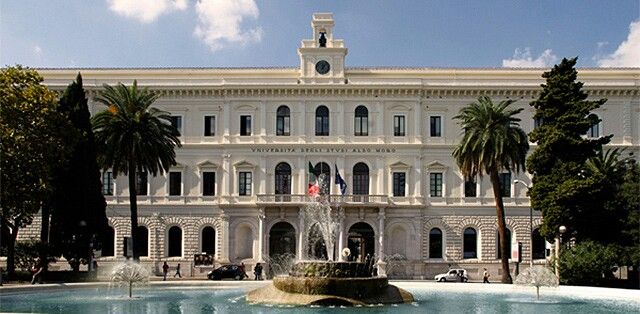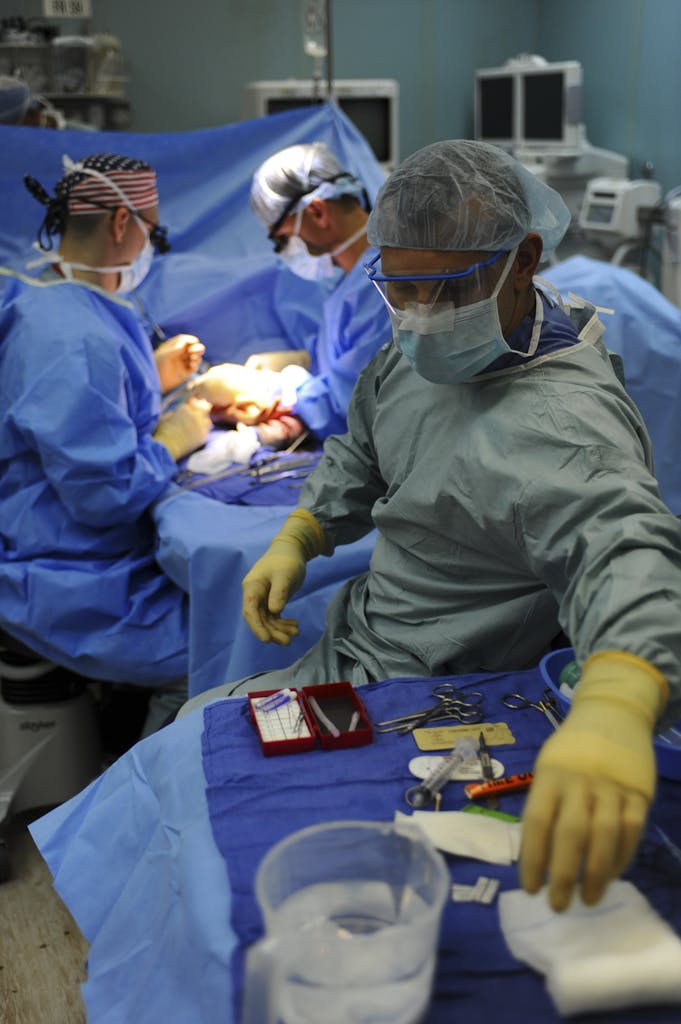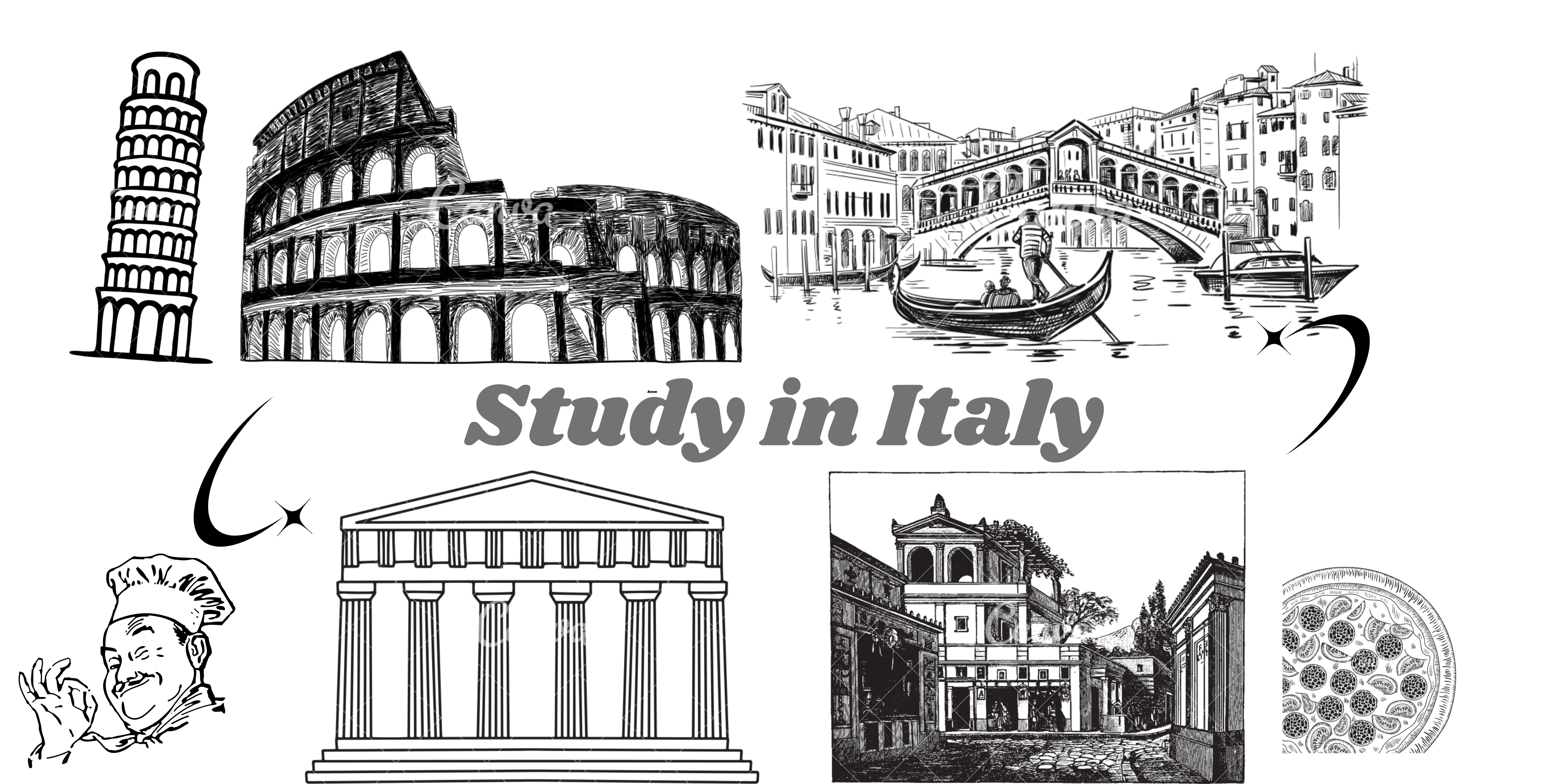Road to Medicine-Italy. Find out! how to pursue medical education in Italy as an international student! Learn about entry requirements, IMAT exam tips, top medical universities, and the benefits of studying medicine in Italy in English. This is your guide to become a doctor in Italy.
The “Road to Medicine“ series, where we make sense of the wild, wonderful (and sometimes confusing) world of medical education across the globe. In this series, we’ll break down the steps needed to become a doctor in various countries. We will be shining a light on the exact journey you’ll be taking as an international student.
Medical education is not one-size-fits-all. You could be on a fast track with a 6-year degree or hopping between 2-year programs before clinical rotations. Sound confusing? That’s where we step in—to demystify the process and get you geared up for exciting journey ahead!
Overview of the Medical Education
You’re thinking of becoming a doctor in Italy? Bellissimo! Italy’s medical education system is as rich as its history. It is especially great for international students. Why? Because you can earn your entire medical degree in English. You may think of it as an English program, but you need to be stressful of learning to speak a good level of Italian language. It is not to say that you will not get admission without Italian language certification. But the pace and experience will multiply manifold if you develop good language skills.
Duration and Structure of Medical Degree
Here! medical school typically lasts six years. That’s right—just six years from the day you start until you’re holding that coveted MD (or “Laurea in Medicina e Chirurgia,” if you want to get fancy). Unlike other countries that require a separate undergraduate degree first (we’re looking at you, USA), Italy offers a direct-entry program. This means you can jump straight into medical studies right after high school or an equivalent qualification. Cool?
These six years include both theory and practical training. You’ll be hitting the books hard in the first few years. By that I mean getting down the basics like anatomy, biology, and biochemistry. Then you will move on to the clinical rotations. And trust me, when you’re learning from doctors who are passionate about patient care, those long days of learning theory feel fruitful.
Pathway Options for International Students
It gets better. You don’t need to be fluent in Italian to study medicine in this beautiful country. As I said earlier learning a new language even to a basic conversation level will open new doors of opportunities for you. Many Italian universities (in total 13), including the famous University of Pavia, University of Milan, and Sapienza University of Rome, offer full medical degrees in English. This makes Italy a prime destination for international students who want high-quality education without language barriers.


Italy’s medical programs are recognized across Europe and beyond. You’ll be eligible to work in the EU, and with some additional steps, even in countries like the USA, Canada, and Australia.
Admission Requirements for International Students
You’re all set to start your medical journey in Italy—awesome choice! But before you pack your bags for Rome, Milan, or Pavia, let’s talk about what it takes to get that acceptance .
Academic Requirements
The first and prominent hurdle is the international students have to take the IMAT (International Medical Admissions Test). It is like the gateway to getting into Italian medical schools in English programs. The IMAT is a standardized test that covers everything from scientific knowledge to logical reasoning, and it’s crucial for your application. The test isn’t crazy difficult, but it’s competitive—so make sure you’re prepping like you mean it.
Pro Tip: Many top universities like the University of Milan and University of Pavia heavily weigh your IMAT score, so nailing it will get you closer to your Italian medical school dream.
You need to have completed at least secondary level of education (which is around 12 to 13 years in most countries). There is no upper limit in terms of age or academic qualifications.
Language Requirements
One big question many international students have is: “Do I need to speak Italian?”. For most of the English-taught programs, the answer is no. You don’t need to be fluent in Italian when you apply because all your course will be in English. Since, you’ll eventually be doing clinical rotations in Italian hospitals, learning some basic Italian will definitely help. Trust me, when you’re working with patients, being able to speak the language is going to give you an edge.

Some schools might ask for proof of English proficiency (like IELTS or TOEFL scores), especially if you’re from a non-English-speaking country. Make sure to check the requirements for each university you apply to. A certificate of English language proficiency can become the deciding factor when scores are tied in IMAT.
The Application Process
Applying to medicine degree (medicine/surgery or dentistry) is different from other programs. Many students get confused over the simplest of the steps. Keep in mind that guide here may not be the same for other degree programs.
1. Pre-enrollment Application
- Create a Universitaly Account – This is where it all starts. Head over to the Universitaly.com website and register.
- Pick Your Medical Schools – You can apply to multiple universities if you are an EU national. Non-EU students only get to apply to only one university of their choice.
- Upload Your Docs – You’ll need to submit documents like your high school diploma, passport, and maybe proof of English proficiency. Make sure you scan everything from the get-go!
Turin, Pavia and Messina require an additional step before pre-enrollment: pre-registration on the official website of the universities.
Once pre-enrollment is done the university will send your application to the embassy in your country and you will be able to download/print application on the Universitaly portal.
2. IMAT Registration
Remember getting pre-enrollment application does not mean your admission is secured. You need to register for the IMAT which opens around July-September each year (check MIUR and univeritaly for actual dates). It is a simple step done on the univeritaly website and comes with a fee which is around 150$. In order to get admission, you need to sit IMAT, score good, end up in university ranking list The ranking list is released around 2-3 weeks after the IMAT.
Once you get selected in the merit list, the university will approach you via email and will guide you to complete registration process before the due date.
3. VISA Application
Since you are an international student, you need to apply for visa so get your documents prepared way before you take IMAT. The requirements may differ from country to country, so it is better to contact the embassy of Italy in your country
Cost of Studying Medicine in Italy
How much is this Italian dream going to cost you? Good news—it’s way more affordable than you think! Italy offers world-class medical education without the hefty price tag you’d find in the U.S. or the U.K. But let’s break it down so you know exactly what to expect when budgeting for your med school.


Tuition Fee
Universities here are known for their low tuition fees, even for international students. On average, tuition fees for a medical degree in Italy can range from €500 to €4,000 per year. Yup, you read that right! You’re getting a high-quality medical education for a fraction of the cost compared to other popular study destinations. Of course, the fees can vary depending on the university and your financial situation. Many universities also calculate tuition based on your family’s income, so you might be paying less than the given amount.
Living Cost
It isn’t just about sipping cappuccinos by the Colosseum. You’ll need to budget for things like rent, food, transportation, and of course, a bit of fun. On average, you should expect to spend around €400 to €700 per month depending on the city. Big cities like Rome and Milan will naturally be a bit more expensive, while smaller towns like Pavia or Siena could save you some euros.
It differs from city to city. Here’s a rough idea of the expenses you may take into account:
- Rent: €300-€600 (depending on whether you’re in a shared apartment or dorm). Do your own research and you might be paying 100 to 200 euro per month.
- Groceries: €150-€250
- Transport: €25-€50 (depending on whether you get student discounts)
- Eating Out/Fun: It depends on the person but to give you a rough idea, may be around 100 euro per month would be a good guess.
Financial Aid / Scholarship
Two types of scholarships, you need to keep in mind here.
1, Regional scholarship
Regional scholarships are region/university specific and almost all regions have scholarships named different. Thses scholarships offer 7000 to 8000 euro per anum and you need to get your credit points to a specific threshold in your respective course to retain scholarship for the subsequent year.
For example, regional scholarship Adisurc covers for “University of Campania Luigi Vanvitelli” and “University of Naples Federico II“. Keep in mind, for these scholarships you have to apply separately from universitaly and their dates may be different from those of IMAT and pre-enrollment.
2. University Scholarships
Many universities offer different types of scholarships that are different from regional scholarships.
For example, if you complete your year in course among top of your class you may get tution fee waiver. Financial aid covering your day to day to meals, books is also given to the students. It is better to research your university of choice. You may want to walk up to reception desk once you get enrolled to ask them about money! money! I mean financial aid.
Learn more about the scholarships/Financial Aid for other Universities Here!
Clinical Rotations in Italy: Getting Hands-On Experience
Once you’re deep into medical school in Italy, things start to get real with clinical rotations. This is where you step out of the lecture hall and into hospitals to put all that book knowledge into action. In Italy, clinical rotations are an essential part of the 6-year medical degree program and start typically in the fourth year.

Doctor in Italy- Clinical Rotations
Rotations are where you’ll work alongside doctors in various specialties—like internal medicine, surgery, pediatrics, and OB-GYN. This hands-on experience is crucial because it lets you see how things work in the real world, not just in textbooks. Plus, it gives you a taste of what kind of doctor you might want to become.
Pro Tip: In Italy clinical rotations often happen in public hospitals, and the experience is quite immersive. Italian patients might not always speak English, so knowing some basic Italian is a game-changer. Remember what I said about the language qualifications earlier? If you’re an international student, brushing up on medical terminology in Italian can help you feel more confident.
Postgraduate Training and Specialization: What’s Next After Med School?
Now, you’ve completed your 6-year medical degree in Italy, what’s next? Welcome to the world of postgraduate training! In Italy, becoming a fully licensed doctor involves a bit more schooling and specialized training—so buckle up.
Residency Programs in Italy
You’ll need to apply for a residency program to specialize in a particular field. Residency programs in Italy are highly competitive, and students must pass a national exam (called the Concorso Nazionale) to get into their desired specialty. It’s kind of like the Hunger Games but with stethoscopes. You can also apply if you studied medicine in any other country, but you need to pass the test “Concorso Nazionale” and have C1 level certification in Italian language.
Residency programs last anywhere from 3 to 6 years, depending on the specialty.
Conclusion
Here is an honest opinion and a reality check for you. You might have gotten motivated after reading sugar-coated language. The real world is not as sweet as you think it is. You may encounter many problems while living in a foreign country and worst comes when there is no one you can trust. It is better for you to join communities (medicine in Italy) and make an informed decision. Hope for the best and be mentally prepared for the worst.

